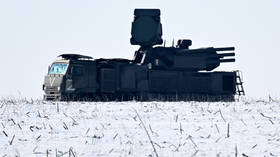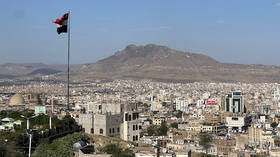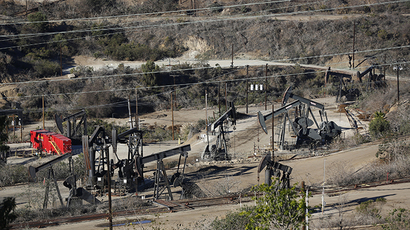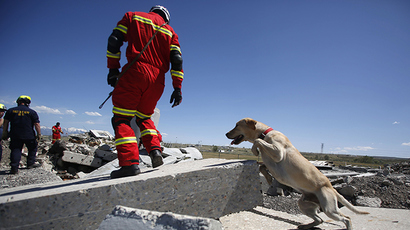Groundwater pumping may cause increase in California earthquakes
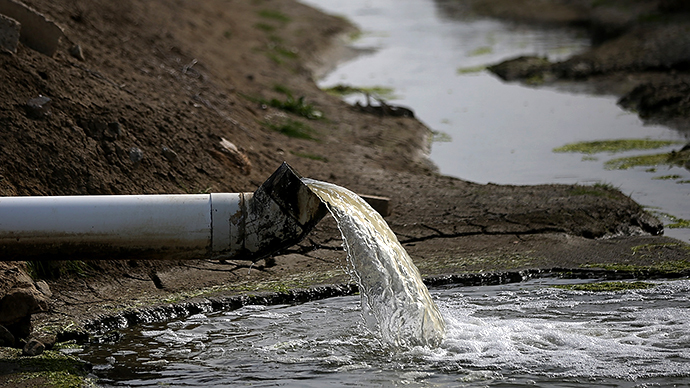
The heavy use of groundwater from California’s Central Valley may be causing an increase in the number of earthquakes along the infamous San Andreas Fault, a new study finds.
Scientists from Western Washington University; University of Ottawa; University of Nevada, Reno; and University of California, Berkeley used GPS data to discover that the mountains surrounding the centrally located San Joaquin Valley were growing at a faster-than-expected rate compared to ranges further away - a rate of 1 to 3 millimeters per year. They found that the mountains had grown by just under six inches over the last 150 years, since groundwater pumping began in the area in 1860, Live Science reported.
The researchers, whose study was published in Nature, believe that when heavy groundwater is removed, the Earth’s crust springs upward, changing the pressure on the fault, which could trigger more small earthquakes, the Los Angeles Times reported.
"It reduces the forces that are keeping the fault clamped together — leading to more small earthquakes during dry periods of time," Colin B. Amos, assistant professor of geology at Western Washington University and the lead author of the study, told the Times. "During wet periods of time when the fault is loaded down, the forces that are keeping the fault clamped down are greater. It inhibits the sliding of the fault."
A similar effect takes place in the Himalayas, which experience far more earthquakes in winter than summer, Live Science reported. GPS studies there connected the drenching summer monsoon cycle to changes in the Earth's crust that lead to more winter earthquakes.
"Over the long term, because we're losing more groundwater, it could give rise to more seismicity by reducing these overall forces," Amos said. "Our model of what the groundwater is doing might explain those two things: showing that humans may have a hand in changing the state of stress on the fault, and therefore, rates of small earthquakes over time."
The Central Valley is the state's top agricultural producing region, sometimes called “the nation's salad bowl” for the great array of nuts, fruits, and vegetables grown in its fertile soil, according to the state government. One of its counties, Fresno, is the most agriculturally productive county in the US. The valley, which includes the San Joaquin Valley Bioregion, the Sacramento Valley, and the Sacramento-San Joaquin Delta, produces about 25 percent of the nation’s table food on only one percent of the country’s farmland, according to the US Geological Survey. About 20 percent of the nation’s groundwater comes from its water table, making it the second-most-pumped aquifer system in the country, the Times said.
Since the area was settled in the 1860s, irrigation prompted the disappearance of Tulare Lake, once the largest body of fresh water west of the Mississippi. Since that time, the Central Valley's groundwater reserve has lost about 38 cubic miles of water — enough to drain Lake Tahoe, the Times reported.
"This study shows that human-induced changes are significant and must be considered in earthquake hazard analyses," Paul Lundgren, a geophysicist at NASA's Jet Propulsion Laboratory (JPL) in Pasadena, Calif., told Live Science. Lundgren was not involved in the study, but wrote commentary on it that was published in the latest issue of Nature.
“The human effect is becoming the dominant effect. The more you deplete that groundwater, the more you keep promoting that fault towards failure,” Lundgren said to the Guardian. “We don't know how far that fault has to go before we have the next large earthquake. It's kind of like going up an escalator. You are going up a little faster than you would ordinarily go but you still don't know how far it is to the top.”
Amos pointed out to the Times that the removal of large amounts
of groundwater is not the only cause of quakes along the San
Andreas Fault. “Large earthquakes are going to occur on the
San Andreas Fault no matter what we do,” he said. “It's
really opening up a possibility that humans are changing stresses
on faults. It’s a simple realization that human use of
groundwater is having small but perhaps measurable impacts on the
San Andreas fault.”
The research arrives at a time when California is dealing with a three-year drought and the southern part of the state is battling wildfires.
And even when rain does arrive, the parched ground cannot absorb the water fast enough, leading to mudslides.
Hydraulic fracturing – or fracking – is another concern, as it may have a similar effect on earthquakes in California. Oil and gas are also important industries in the San Joaquin bioregion. The deepest wells and about half of the largest oil fields are found in Kern County, as is the Elkhorn Hills Naval Petroleum Reserve, according to the state government. When Oklahoma actually outpaced California in total quakes during each of the first three months in 2014, researchers said they believed injection wells used to dispose of fracking wastewater were contributing to heightened earthquake activity. To unleash natural gas, fracking requires large volumes of water, sand, and chemicals to be pumped underground.
South of the Central Valley, Beverly Hills’ fracking ban will go into effect on June 6, while the Los Angeles City Council passed a moratorium on the practice in January.
"Human activities are changing things that we hadn't appreciated before - its a wake up call to the far reaching implications for the things that we are doing that may affect systems that we didn't know that we could affect," Amos told BBC News about the study.


